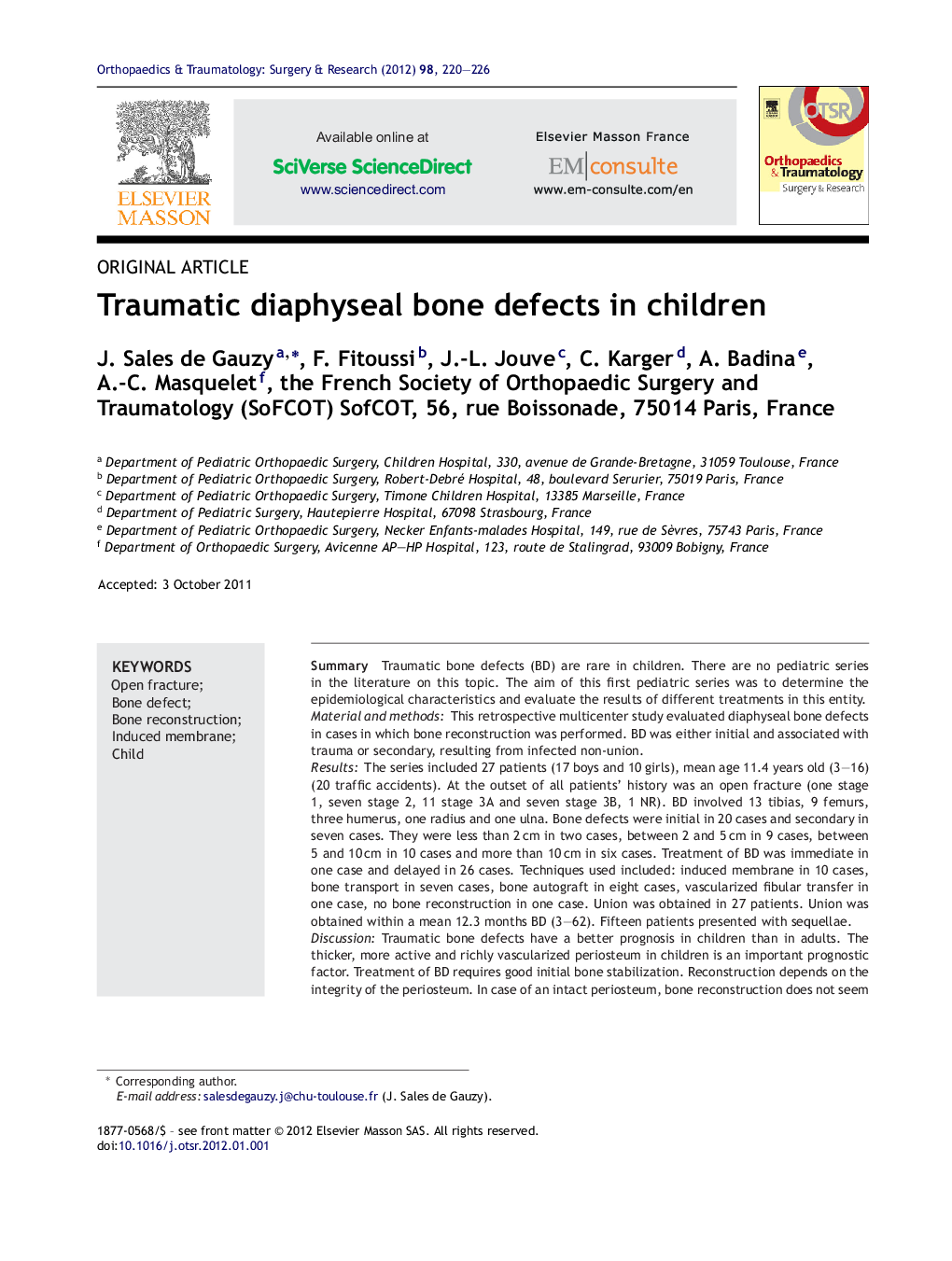| کد مقاله | کد نشریه | سال انتشار | مقاله انگلیسی | نسخه تمام متن |
|---|---|---|---|---|
| 4081790 | 1267608 | 2012 | 7 صفحه PDF | دانلود رایگان |

SummaryTraumatic bone defects (BD) are rare in children. There are no pediatric series in the literature on this topic. The aim of this first pediatric series was to determine the epidemiological characteristics and evaluate the results of different treatments in this entity.Material and methodsThis retrospective multicenter study evaluated diaphyseal bone defects in cases in which bone reconstruction was performed. BD was either initial and associated with trauma or secondary, resulting from infected non-union.ResultsThe series included 27 patients (17 boys and 10 girls), mean age 11.4 years old (3–16) (20 traffic accidents). At the outset of all patients’ history was an open fracture (one stage 1, seven stage 2, 11 stage 3A and seven stage 3B, 1 NR). BD involved 13 tibias, 9 femurs, three humerus, one radius and one ulna. Bone defects were initial in 20 cases and secondary in seven cases. They were less than 2 cm in two cases, between 2 and 5 cm in 9 cases, between 5 and 10 cm in 10 cases and more than 10 cm in six cases. Treatment of BD was immediate in one case and delayed in 26 cases. Techniques used included: induced membrane in 10 cases, bone transport in seven cases, bone autograft in eight cases, vascularized fibular transfer in one case, no bone reconstruction in one case. Union was obtained in 27 patients. Union was obtained within a mean 12.3 months BD (3–62). Fifteen patients presented with sequellae.DiscussionTraumatic bone defects have a better prognosis in children than in adults. The thicker, more active and richly vascularized periosteum in children is an important prognostic factor. Treatment of BD requires good initial bone stabilization. Reconstruction depends on the integrity of the periosteum. In case of an intact periosteum, bone reconstruction does not seem necessary in young children. If one part of the periosteum is intact, a simple autograft seems sufficient even with extensive bone defects. In the absence of the periosteum or especially in case of infection, the induced membrane technique seems preferable, with bone transport or a vascularized bone transfer.Level of evidenceIV: retrospective study.
Journal: Orthopaedics & Traumatology: Surgery & Research - Volume 98, Issue 2, April 2012, Pages 220–226